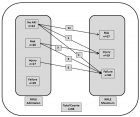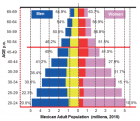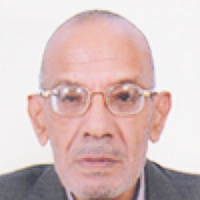Table of Contents
Factors influencing referral delay of cancer patients to an oncology unit in the Southern Region of Saudi Arabia
Published on: 20th August, 2021
OCLC Number/Unique Identifier: 9194011239
Introduction: Cancer treatment and prognosis depend heavily on early detection. Survival in the early stages is excellent for almost all types of cancer. Unfortunately, in Saudi Arabia, a large number of cancer patients present with advanced disease, resulting in a poor prognosis. There are three levels of delay in the management of cancer patients. The first level is the time between the first cancer-related symptoms and the presentation to the health facility, the second level is from the presentation to the diagnosis, and the third level is between the diagnosis and the treatment. This study aims to determine if there is a delay, at what level and to study the factors causing such delays.Materials and methods: Two hundred cancer patients who presented to the Armed Forces Hospital Southern Region, Oncology Department, were interviewed from January 1st to June 30th, 2018. The interviews were conducted by trained physicians familiar with the questionnaire’s contents. The questionnaire consisted of four sections: a demographic section and three more sections to identify factors causing the delay at the three levels from the patients’ perspectives. All data were analyzed using the SPSS version 20.0.Results: The mean patient age was 63 years. A total of 112 patients were female and 88 were male. The most common cancer type was breast cancer (27.5%). Among the patients, 61% were illiterate and 25.5% had elementary school degrees, 86% expressed little or no general medical knowledge about cancer. More women than men paid attention to cancer symptoms (70% vs. 54%). 75% of the patients presented to the first health facility after 2 months from the first appearance of symptoms (level 1 delay). Only 2% of the patients presented within one week. 50% of the patients received a diagnosis after visiting two health facilities. All patients were diagnosed at hospitals. 40% of patients used alternative medicines, 70% of whom thought this was the cause of their delayed presentations. 67% had their diagnosis confirmed within one month (level 2 delay), and 66% started their definitive treatment within one month (level 3 delay). 75% of the patients blame themselves for the delay. Educational level (p = 0.03), knowledge about cancer (p < 0.01), and the use of complementary and alternative medicines (CAM) (p = 0.01) were significantly associated with delayed presentation of patients to the health facility. Conclusion: There is a delay in the presentation of cancer patients (level 1) in the southern part of Saudi Arabia. Educational level, knowledge of cancer symptoms, and use of complementary and alternative medicines are the main causes. There were no delays in diagnosis and start of treatment (level 2,3).
A retrospective review of the factors that negatively influenced the eradication of polio in South-South, Nigeria
Published on: 30th July, 2021
OCLC Number/Unique Identifier: 9186964198
Background: The endemic nature of poliomyelitis in Nigeria was a source of concern to many given the global efforts aimed at eradicating the scourge. In this study, the factors that influenced the eradication of this malady in South-South Nigeria (Akwa Ibom and Cross River State) were investigated. Four null hypotheses, drawn on these factors (including culture belief, religious difference, language and the prevalence of ethnic conflict) guided the investigation.
The main thrust of this study was to examine how socio-cultural factors negatively influenced the eradication of polio in the study area.
Methods: Through stratified random and purposive sampling techniques, 600 adult men and women who had children were selected for the study. A structured questionnaire constructed by the researcher was used in data collection. Data analysis was carried out using one-way ANOVA and independent t-test statistical tools.
Results: The findings were that cultural belief and religious affiliation exerted significant influence on the people’s effort towards polio eradication.
Conclusion: The study indicated that the low use of health services by the people was brought about by variation in these variables. Among other things, it was suggested that continuous awareness campaigns be carried out to educate the people on the need for immunization anchored in science and technology.
Epidemiological profile of the homeless population assisted by voluntary initiative and the social impact on access to healthcare: an investigative study in Curitiba, Brazil
Published on: 7th July, 2021
OCLC Number/Unique Identifier: 9137583522
Objective: The study aimed to describe the epidemiological profile of the homeless population and report the social impact on healthcare services provided by a voluntary initiative during one-year of follow-up.
Method: This is an investigational study, carried out in an important capital-city of southern Brazil, which included 509 individuals in 2019. Findings were divided into three segments: sociodemographic, substance use/abuse and impact on healthcare.
Results: The sociodemographic profile found was predominantly male, white, single, heterosexual, educated in elementary or high school, in regular use of legal and/or illegal substances, and living as homeless for less than a year. The impact of assistance provided on the perception of individuals who returned in subsequent actions was evident.
Conclusion: The significant increase in the number of homeless people in large urban centers can benefit from the support of non-profit organizations to address the deficiencies faced in accessing basic health services. Based on this, we seek to advance in the development of new policies that improve local healthcare for the vulnerable population, to be more assertive to their needs.
Neo communicable disease rather than ‘non’ communicable disease for the acronym “NCD”
Published on: 30th June, 2021
OCLC Number/Unique Identifier: 9124844156
It is with interest and pleasure that I see notices of meetings and symposia, and articles, devoted to the theme Noncommunicable disease. I still live in the economic and geographical ‘South’ but the concern arises from the continued use of terminology that dulls the senses to the urgency of the problems involved. Since I wrote the letter (reference at end) the epidemic of the so called ‘non’ communicable disease has increased greatly; obesity, cardiovascular disease, diabetes, cancers, accidental trauma, road deaths etc, and there is still less research and action about breaking the methods of spread than there is about the illnesses.
Institutional capacity of health care institutes for diagnosis and management of common genetic diseases - A study from a north coastal district of Andhra Pradesh
Published on: 28th June, 2021
OCLC Number/Unique Identifier: 9124855034
Background: In India, the genetic disease is a disregarded service element in the community health- protection system. This study aims to gauge the accessibility of services for treating genetic disorders and also to evaluate the practices on deterrence and management services in the district health system.
Methods: A cross-sectional survey of selected health amenities from 454 medical officers (MO’s), 94 accredited social health activist (ASHAs) workers, 86 multipurpose health assistant-female (MPHA-F), 34 multipurpose health assistant-male (MPHA-M), 14 multipurpose health supervisors-female (MPHS-F), 10 multipurpose health supervisors-male (MPHS-M), 6 multipurpose health extension officer/ community health officer (MPHEO/CHO), 10 public health nurse (PHN), 45 lab technicians (LT’s) working in the government health sector and 254 in the private health sector, 409 nursing staff working in the government health sector and 995 in the private health sector, 15 primary health centers (PHC’s), 4 community health centers (CHC’s), 1 district government hospital (DGH), 3 referral hospitals (RH’s). From the side of private health institutions 25 corporate hospitals (CH’s), 3 medical colleges (MC’s), and 25 diagnostic laboratories (DL’s) were conducted.
Results: The findings show that adequate staff was in place at more than 70% of health centers, but none of the staff have obtained any operative training on genetic disease management. The largest part of the DH’s had rudimentary infrastructural and diagnostic facilities. However, the greater part of the CHC’s and PHC’s had inadequate diagnostic facilities related to genetic disease management. Biochemical, molecular, and cytogenetic services were not available at PHC’s and CHC’s. DH’s, RH’s, and all selected medical colleges were found to have offered the basic Biochemical genetics units during the survey. In 24% of CH’s, the basic biochemical units are available and 32% (8 out of 25) of DL’s have the advanced biochemical genetics units by study. Molecular genetics units were found to be available in 28% (7 out of 25) of DL’s during the study. About 6 (24%) diagnostic centers of cytogenetic laboratories were located in the Visakhapatnam district under the private sector.
Conclusion: The district health care infrastructure in India has a shortage of basic services to be provided for the genetic disorder. With some policy resolutions and facility strengthening, it is possible to provide advanced services for a genetic disorder in the district health system.
Suicide in teenagers during the COVID-19 pandemic in Cuba: actions for its prevention
Published on: 7th May, 2021
OCLC Number/Unique Identifier: 9124702324
Introduction: Suicidal behavior in teenagers constitutes a health problem that, given the necessary measures of social isolation taken by the global emergency of the COVID-19 pandemic, must generate timely actions for its prevention and control from the public health services.
Objective: To propose an action plan for the prevention of suicide in teenagers of the Remedios municipality, subjected to voluntary home confinement during the COVID-19 pandemic.
Methods: an observational, descriptive, cross-sectional study was carried out in the “XXX Anniversary” Teaching Community Polyclinic of the municipality Remedios. We worked with the population of 25 teenagers between 12 and 19 years old who made suicide attempts in the period 2019-2021. The empirical methods used were: bibliographic and documentary review, participant observation, focus group, semi-structured interview and questionnaire.
Results: The suicide attempt was common in female teenagers aged 17 to 19 years not identified as risk, the lack of motivation due to the study activity and the previous suicide attempts by ingesting psychotropic drugs without serious intention of dying predominated. The most frequent psychological disorders were emotional disorders, stress, depression, irritability, apathy and insomnia. Actions are presented for the prevention of suicide and promote behaviors that contribute to mental health in the context of COVID-19.
Conclusion: The prevention of suicidal behavior in teenagers in conditions of social isolation due to COVID-19, must include actions that facilitate the coping with stress, intra-family communication and resilience.

If you are already a member of our network and need to keep track of any developments regarding a question you have already submitted, click "take me to my Query."



















































































































































